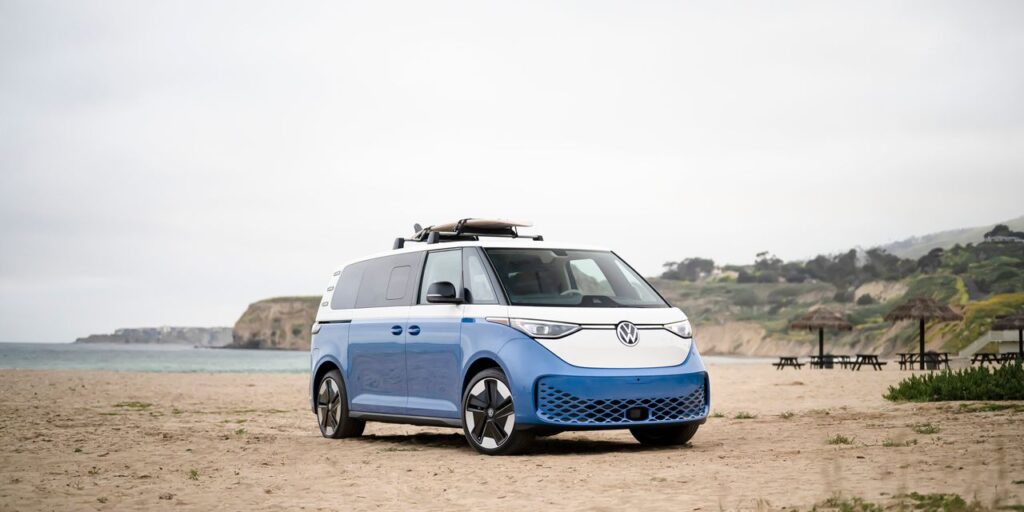Grab your bell-bottoms: The VW bus is back.
On Friday,
Volkswagen
(ticker: VOW) detailed its plans to bring an all-electric version of its iconic microbus to North America in 2024.
Its gas-guzzling predecessor was a cultural icon of the 1960s and 1970s, associated with road trips and peace signs. While this new iteration, called the ID. Buzz, offers a visual callback to that era, it will be anything but dated.
(Gas guzzling might make enthusiasts bristle and while 15 to 20 miles a gallon was an accomplishment back then, a Toyota Sienna hybrid minivan gets about twice that mpg today.)
“The zero-direct emission ID. Buzz is the spiritual reincarnation of the Microbus, reimagined for our electric future,” said Pablo Di Si, president and CEO of
Volkswagen
of America, in a news release. “It is practical, sustainable, and packaged in an unmistakably fun way that is classic Volkswagen. With its launch, the Bus will once again become our brand hero in America.”
ID is a designation VW uses for its EVs.
Electric-vehicle sales in America have been on fire—surging 45% year over year to a record 259,000 units in the first quarter—thanks to lower operating costs, environmental benefits, new incentives, and regulations. The biggest reason for growth, though, might be that more attractive EVs are hitting the market. The VW ID. Buzz is just the latest example.
The EV’s base version will be a rear-wheel drive model with an electric motor providing about 280 horsepower and with a 91 kilowatt-hour battery pack. Per-charge range isn’t available yet, but a battery that size should get drivers 200 to 300 miles on a single charge. That’s fairly common for today’s EVs. An all-wheel version will be available too—that will likely have two electric motors and pack in more horsepower.
The bus will have three rows of seating, so it will compete—to some extent—with other three-row EVs, including the
Tesla
(TSLA) Model Y. There are some other three-row SUVs available today, including the
Rivian Automotive
(RIVN) R1S, the
Mercedes-Benz
(MBG.Germany) EQB, and the
Tesla
Model X. Those are all pricier vehicles than the Model Y, which starts at $47,500.
Pricing for the Buzz bus isn’t available yet. Car buyers should expect to see a base model starting between $50,000 and $60,000.
Car buyers are still interested in the old microbus, which list on
Cars.com
(CARS) for as much as $138,000. That price tag is for a 1958 model bus, but some models list for under $30,000.
VW started making the original bus in 1950—it was the second vehicle ever created by Volkswagen, after its other iconic car, the VW Beetle. VW made 9,500 units in its first year of bus production.
The arrival of the Buzz adds to the overall trend of growing model availability. Last year, more than 20 EV models sold north of 5,000 units in the U.S., compared with 13 in 2021. And in the first three months of this year alone, 25 models were on pace to sell more than 5,000 units.
More EVs are coming. Some are conventional-looking, like the Chevy Silverado, Equinox, and Blazer from
General Motors
(GM). Those should all arrive in 2023. Some, like the Buzz, are a little edgier. The angular Tesla Cybertruck is also expected to arrive later this year. That’s another important vehicle investors can use to gauge how accepting consumers will be of EVs with more avant-garde designs.
Volkswagen U.S. listed American depositary receipts were up 3.8% Friday. The
S&P 500
and
Dow Jones Industrial Average
closed up 1.5% and 2.1%, respectively.
Write to Al Root at [email protected]
Read the full article here













